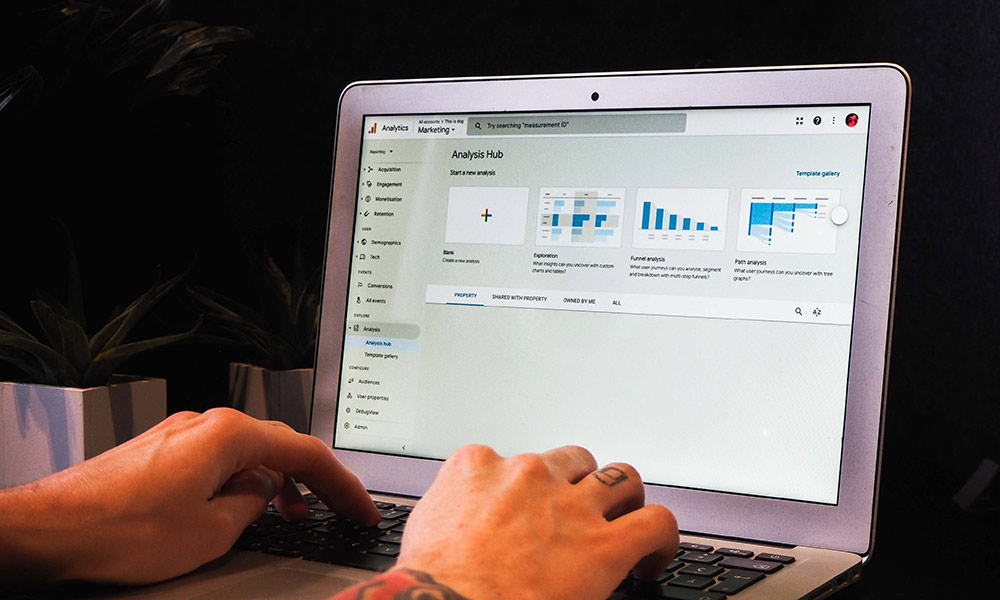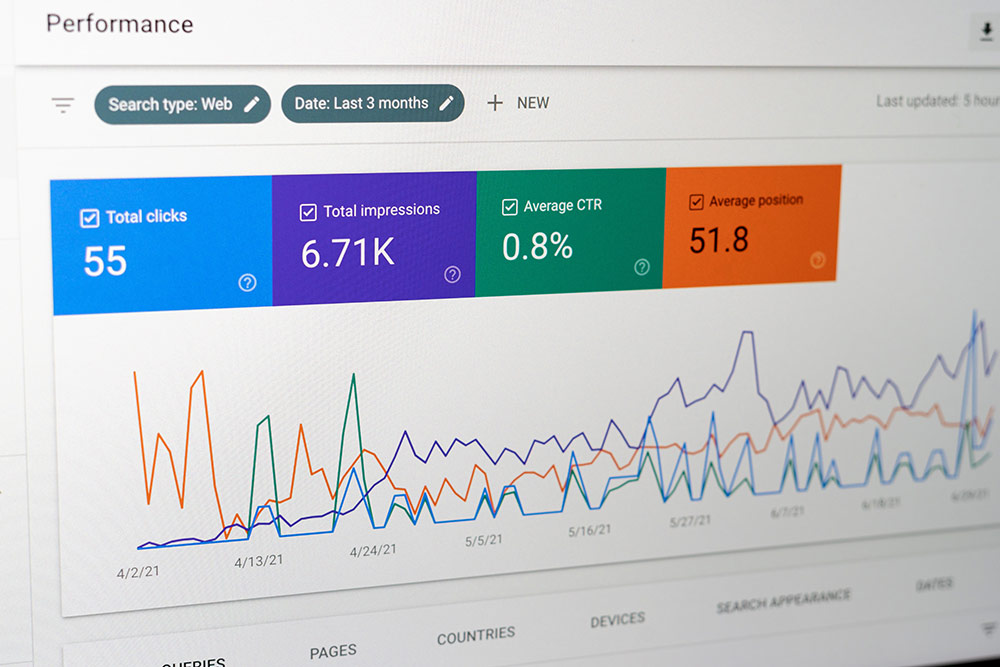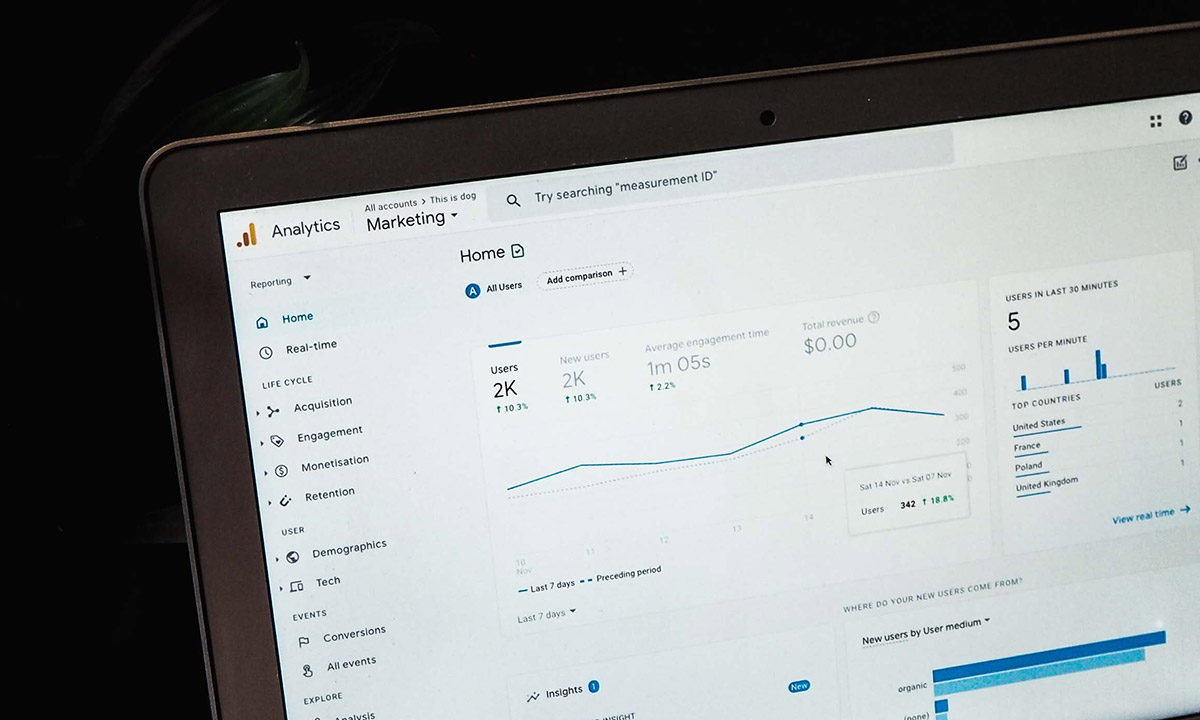What Does Google Analytics Actually Do?

After thoroughly researching your target audience and creating high-quality content, you are ready to launch your digital marketing campaign. However, it is essential to have a robust analytics system in place from the beginning to track and measure the success of your efforts effectively. With this, your campaign may reach its full potential.
Statista shows that Google Analytics is the most widely used analytics platform, with a market share of 30% and over half of all websites using it. This demonstrates the significance of Google Analytics as a platform for tracking and analysing website traffic and user behaviour.
Google Analytics 4 (GA4) replaces the previously used Universal Analytics (UA) platform. UA will be phased out by 2023, so businesses need to use GA4 to maintain access to data and insights. It is essential to understand the changes made with the transition to GA4 to ensure a smooth transition.
To maximise revenue and remain competitive, it is essential to use analytics to your advantage. Let's explore how you can do this.
Web Analytics?
Web analytics involves collecting and analysing data about a website's traffic and user behaviour. This can include information about where the website's visitors come from, how they navigate the site, which pages and content they engage with most, and how they leave the site. Web analytics tools provide this information to help website owners understand and optimise their website's performance.
So, Why Is Google Analytics Important?

There are several compelling reasons for digital marketers to use analytics tools. Here are three of the most important ones:
Analytics tools allow you to make informed decisions based on data
Analytics tools can provide valuable data that marketers can use to optimise the performance of their websites and channels through data-driven decision-making.
Using analytics data to guide actions that improve performance is called data-driven decision-making. For example, if you find that one of your blog posts is receiving a lot of traffic, you can use this information to optimise the page by adding pop-ups and including links to other relevant articles. This way, you can maximise the potential of the page based on the data you have recorded.
Data and analytics can help you make logical, evidence-based decisions to improve performance. While it is generally best to rely on data-driven decision-making, validating and verifying the data is essential to ensure its accuracy.
Analytics tools can make it easier to generate reports
In addition to aiding in decision-making, analytics tools can provide valuable information for reporting on the performance of campaigns and websites to stakeholders. This is especially useful in the context of digital marketing efforts.
Ultimately, marketers aim to use data and analytics to create scenarios that lead to positive outcomes for their organisations or clients. By tracking and analysing data trends using web analytics software, you can make informed decisions and take action to achieve these outcomes.
Analytics tools can help you understand the context and meaning behind the data

One of the significant benefits of web data analysis is that it enables you to uncover insights and improve business performance by understanding the context and meaning behind the data. This helps you to see the bigger picture and get a complete understanding of what the data is telling you.
Web analytics can help you better understand your customers' behaviours across your channels. This includes their demographics, location, interests, and interactions with your website. It can also reveal any challenges or issues hindering conversions on your website. By gaining this understanding, you can use this information to make informed decisions that lead to commercial returns by tailoring your marketing efforts better to meet the needs and preferences of your customers.
By using the information provided by web analytics, you can improve the user experience on your website and optimise the channels customers use to access your site. This can help attract and retain more customers, ultimately increasing commercial returns.
What Is This About Tools?
Many different analytics tools are available, both free and paid, which vary in terms of the features, functionality, and support they offer. Some require a subscription fee, while others are free to use.
Here are a few examples of available analytics packages:
-
Google Analytics and Google Analytics 360, which are part of the Google Marketing Platform
-
Adobe Analytics
-
Woopra
-
Kissmetrics
-
Webtrends
-
Matomo
So, Google Analytics Is A Tool?
Google Analytics (GA) is the most popular and widely used analytics program. It is free to use, but there is also a paid version called Google Analytics 360, which is intended for websites with over 10 million page views per month and offers additional reporting capabilities. For most websites, the free version of Google Analytics is sufficient.
Google Analytics is a comprehensive tool that marketers widely use to track website traffic, engagement, and conversions. It is often considered the go-to source for this data type due to its extensive features and widespread adoption.
Google Analytics can provide detailed information about the journey of users or customers, including the channels they use, their locations, and the devices they are using. It can also track their on-site activity, goals achieved, exit points, and returning visitors, which can signify loyalty. This information can be beneficial for understanding customer behaviour and optimising the user experience.
Benefits?
Google Analytics is a popular and reliable choice for many marketing needs. The free version of Google Analytics offers several benefits, including:
-
It is free to use
-
It is easy to implement and install
-
It has a user-friendly interface
-
It allows for customization of reports, dashboards, and data collection
-
It offers both basic and advanced options
-
It integrates seamlessly with other Google products
-
It integrates with non-Google traffic sources, such as Facebook, Yahoo, and Bing
-
It provides valuable insights into web behaviour
But What About The Terminology?

In analytics reporting, there are two main concepts: dimensions and metrics. Dimensions describe data, such as country, location, age, gender, and device used, while metrics measure data, such as visitor numbers, revenue, and goal completions.
To get a complete understanding of the data, we can segment metrics using dimensions. For example, we can segment website visits by device type (e.g. desktop, tablet, mobile) to see how each device impacts visitor numbers and conversions.
Some typical dimensions in Google Analytics include:
-
Channel Name
-
Month
-
Country
-
Device
Here are a few examples of standard engagement metrics in Google Analytics:
-
Sessions
-
Users
-
Percentage of New Sessions or visits
-
Page Views
-
Pages per Session
-
Average Session Duration
Exploring the available metrics and considering how they can be segmented using dimensions is essential to gain a deeper understanding of website traffic and customers. This can help you make more informed decisions and optimise your website's performance.
Conversion Metrics?
Conversion metrics go beyond standard visitor metrics by providing insight into users' practical actions on a website. These actions, which may include making a purchase or filling out a form, are typically tied to commercial performance, such as revenue and conversion rates.
Google Analytics offers several standard conversion metrics, which can be found in the Traffic reports. These metrics allow you to see how much value each channel is contributing. Some examples of standard conversion metrics include:
Goals: the number of valuable actions taken on the site, such as sales, leads, or downloads
Conversion Rate: the percentage of visitors who complete a goal
Transactions: the number of sales or shopping basket items sold on an ecommerce website
Revenue: the monetary value of ecommerce sales
To determine the value of campaigns from different digital marketing channels, you can analyse the number of goals and transactions from each channel, the conversion rates, and the cost per conversion. By comparing these data points, you can determine if a channel is worth the time and cost investment based on its profitability.
Closing Words
Google Analytics is a powerful tool that marketers widely use to track and analyse website traffic, engagement, and conversions. It is free to use, easy to implement and install, and has a user-friendly interface.
It offers customisable reports, dashboards, data collection, and basic and advanced options. Google Analytics integrates seamlessly with other Google products and offers post-click integration with non-Google traffic sources, such as Facebook, Yahoo, and Bing.
It provides valuable insights into web behaviour and can help businesses understand their customers better, optimise their website's performance, and make informed decisions that lead to commercial returns. Dimensions describe data, such as country, location, age, gender, and device used, while metrics measure data, such as visitor numbers, revenue, and goal completions.
By segmenting metrics using dimensions, you can understand the data and see how different factors impact visitor numbers and conversions. Conversion metrics focus on practical actions that users take on a website, such as making a purchase or filling out a form, which is typically tied to commercial performance.
By analysing goals, conversion rates, transactions, and revenue, you can determine the value of campaigns from different digital marketing channels and decide if they are worth the time and cost investment based on their profitability.

